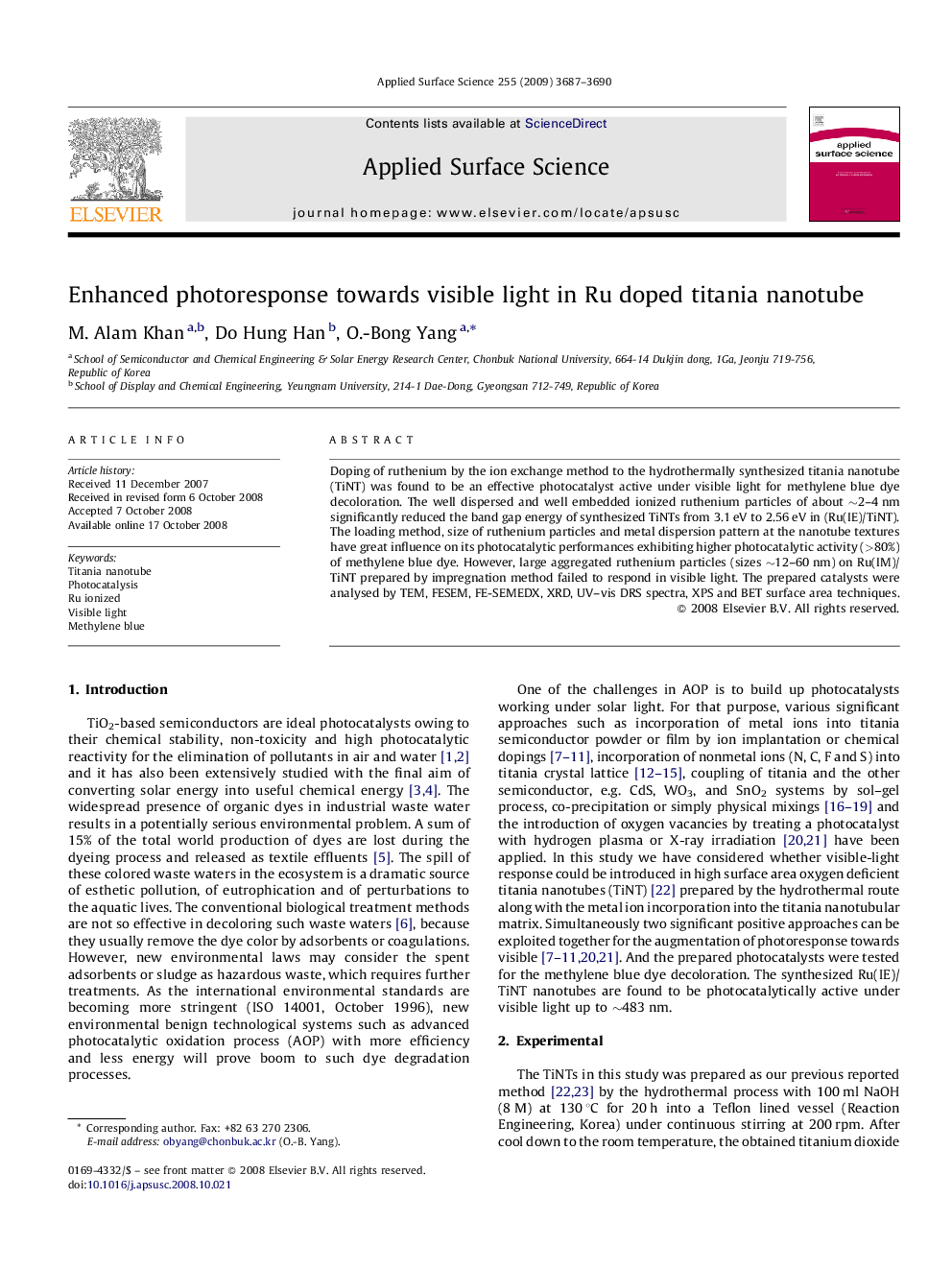| Article ID | Journal | Published Year | Pages | File Type |
|---|---|---|---|---|
| 5364853 | Applied Surface Science | 2009 | 4 Pages |
Abstract
Doping of ruthenium by the ion exchange method to the hydrothermally synthesized titania nanotube (TiNT) was found to be an effective photocatalyst active under visible light for methylene blue dye decoloration. The well dispersed and well embedded ionized ruthenium particles of about â¼2-4Â nm significantly reduced the band gap energy of synthesized TiNTs from 3.1Â eV to 2.56Â eV in (Ru(IE)/TiNT). The loading method, size of ruthenium particles and metal dispersion pattern at the nanotube textures have great influence on its photocatalytic performances exhibiting higher photocatalytic activity (>80%) of methylene blue dye. However, large aggregated ruthenium particles (sizes â¼12-60Â nm) on Ru(IM)/TiNT prepared by impregnation method failed to respond in visible light. The prepared catalysts were analysed by TEM, FESEM, FE-SEMEDX, XRD, UV-vis DRS spectra, XPS and BET surface area techniques.
Related Topics
Physical Sciences and Engineering
Chemistry
Physical and Theoretical Chemistry
Authors
M. Alam Khan, Do Hung Han, O.-Bong Yang,
